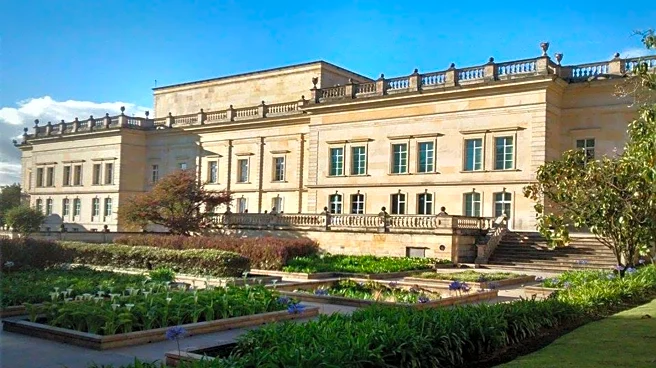What's Happening?
Tate Britain has unveiled plans to create new outdoor gardens and a 'garden classroom' as part of a comprehensive redesign of its Millbank entrance. The proposal includes Mediterranean and East Asian-inspired green spaces, a natural pond, and expanded areas for café seating. The garden classroom, designed for hands-on learning, will serve schoolchildren, community groups, and volunteers. The plans, supported by Westminster City Council, Historic England, and Transport for London, aim to soften the gallery's external appearance and enhance its educational offerings. However, the Victorian Society has raised concerns about potential harm to the building's setting.
Why It's Important?
The proposed redesign of Tate Britain's outdoor spaces reflects a growing trend in museums to integrate natural environments and educational facilities. By creating biodiverse gardens and a dedicated learning space, Tate Britain enhances its role as a cultural and educational hub, attracting more visitors and providing new opportunities for community engagement. The initiative supports environmental sustainability and promotes outdoor learning, aligning with broader societal shifts towards green spaces and experiential education. The project also highlights the importance of balancing heritage preservation with modern development.
What's Next?
The plans for Tate Britain's new gardens and classroom are pending approval from Westminster City's Licensing Committee, which will review the application on September 30. If approved, the project will proceed, potentially setting a precedent for other cultural institutions to incorporate similar green and educational spaces. The museum's initiative may inspire further collaborations with environmental and educational organizations, enhancing its community impact and educational outreach.
Beyond the Headlines
The redesign of Tate Britain's outdoor spaces raises questions about the ethical considerations of altering historical sites. While the project aims to enhance visitor experience and educational offerings, it must navigate concerns about preserving the building's architectural integrity. The initiative also reflects broader cultural shifts towards integrating nature and education in urban environments, promoting sustainability and community well-being. As museums evolve to meet contemporary needs, they must balance innovation with heritage conservation.










